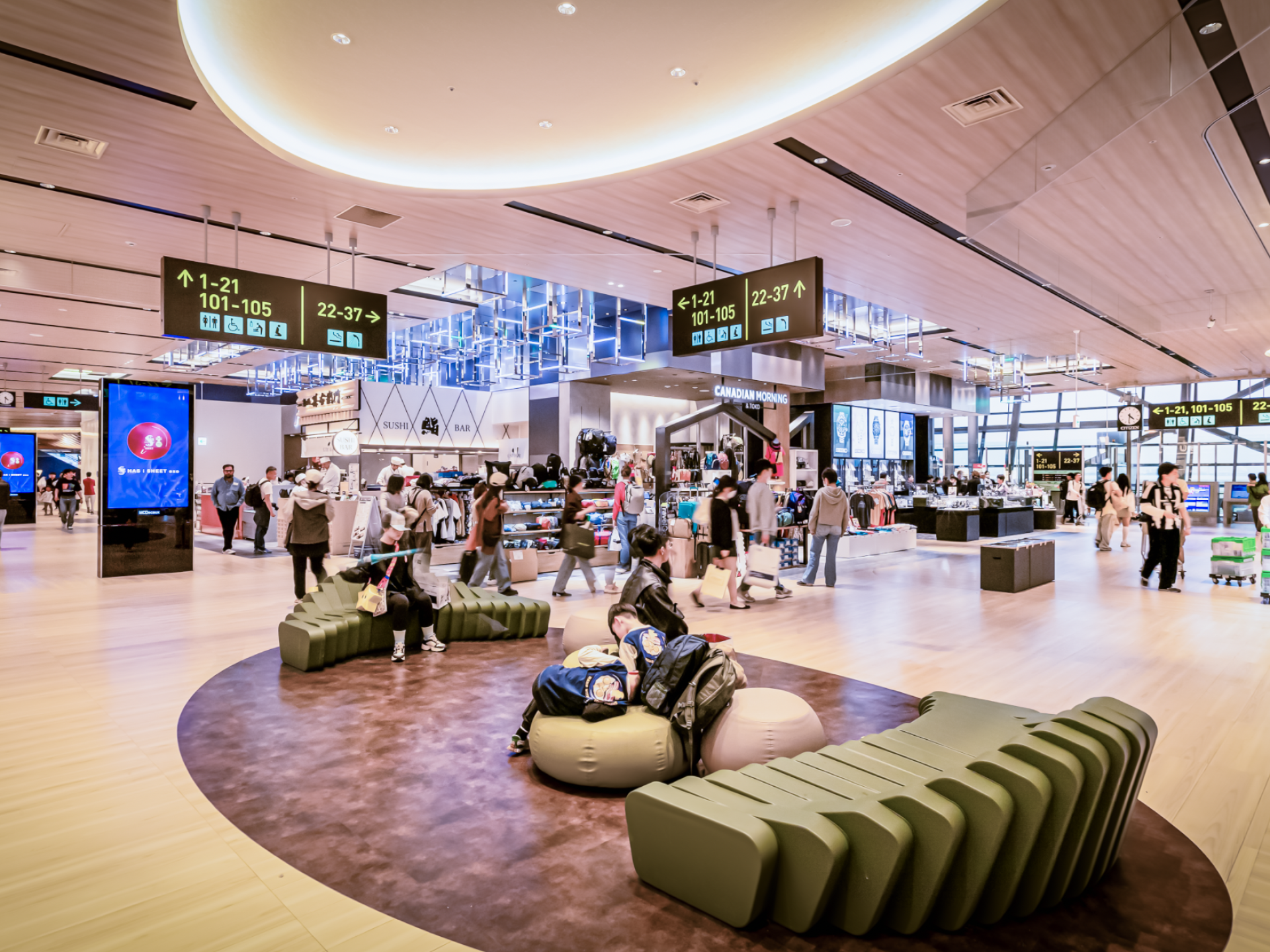April 23, 2025
New research considers the commercial value of integrated airport terminals

The syndicate also includes design and engineering firm Arup, along with Adelaide and Gold Coast airports. The bespoke consumer research will examine domestic terminal retail spend and shopping behaviour among international passengers within integrated terminals, and will be presented at the 2025 Australian Airports Association (AAA) Retail & Commercial Forum in Sydney.
Matt Findlay, Populous’ Head of Aviation – Australia & New Zealand said: “Integrated terminals are a hot topic in the terminal design space in Australia, with a number of airports exploring their potential. Populous recognises the significant commercial benefits that integrated terminal designs could bring to airports, so we’re delighted to be part of this syndicate, researching ways to improve outcomes for all stakeholders.”
Historically, most Australian airports have had separate domestic and international terminals, but some, like Adelaide and Gold Coast, have adopted integrated terminal strategies. An integrated terminal provides a shared sterile retail area after domestic security for all passengers and visitors. To access the international gates, international passengers are required to pass through additional borders (OCP) and security screening (PLAGs). This extra screening, including the need to requeue 90 minutes before departure, reduces the time international passengers spend in the domestic terminal, limiting their potential retail and F&B spend.
The integrated terminal approach can optimise gate capacity at a lower cost by using swing gates, which can switch between domestic and international flights. Other Australian airports with integrated terminals include Perth (T3/T4), Darwin, Hobart, Sunshine Coast, Newcastle and Canberra, with Perth also planning a broader terminal integration. Integrated terminal projects are also being explored at other major airports in Australia and in New Zealand.
As international passenger volumes at airports such as Adelaide and Gold Coast are not yet sufficient to support a full commercial program in the embedded international areas (beyond duty-free and limited F&B offerings), the domestic terminal plays a crucial role in meeting these passengers’ retail needs.
Common departures lounge
The research aims to identify strategies to increase retail spend by finding solutions to enhance international passenger engagement in the domestic area of integrated terminals.
One solution being considered is the introduction of a Common Departures Lounge operation to further improve the commercial performance. The Common Departures Lounge concept implemented overseas, screens all departures passengers to the international standard and provides a common retail and gate area for all departures. The physical Border Force screening is replaced with alternative technological measures.
The syndicate’s two airport members highlight the benefits they expect from the research. Ilona Rose – Head of Retail at Adelaide Airport said: “Adelaide Airport was one of the first – if not the first – integrated terminal in Australia. We have long believed that international passengers play a significant role in our domestic terminal retail program, but until now, we’ve lacked the concrete data to support this theory. Additionally, we need more in-depth insights into how much double screening impacts international passengers’ ability to fully benefit from our extensive retail and F&B program.”
"Maximising the potential of international passengers within an integrated terminal environment is a complex dynamic, with a number of interconnected constraints. The starting point for improved outcomes is a deeper understanding of our customers’ retail spend and shopping behaviour in our current retail environment. This will help us optimise our strategies and improve customer experience as we build for the future."
Australian airports association retail & commercial forum
Mercurius will leverage the consumer research conducted by THINK Global Research, a specialist in the airport sector, to produce a White Paper for presentation at the AAA Retail & Commercial Forum in Sydney from 21 to 23 July.
"Mercurius is excited to bring these stakeholders together to ensure we get the best outcomes from this project. Architects, terminal planners and airports all have a vested interest in this process as the industry works towards both optimal integrated terminal design and commercial success."
The Forum is organised by a joint venture of AAA, the Mercurius Group and the Moodie Davitt Report.
AAA’s CEO Simon Westaway said: “We are delighted that the Retail & Commercial Forum is being used to deliver bespoke and insightful research on key topics of interest to both airports and the airport commercial community alike, it highlights and strengthens the value of attending this event.”
Sentiments echoed by Jim Peacock, Principal at Arup: “Integrated terminals make a lot of sense from an airport planning perspective, but the current requirement to double security screen international passengers can be a barrier to efficient airport operations – using up space, adding cost and eating into passenger dwell time. This research will further our collective understanding of the merits of integrated terminals and shape our understanding of the Common Departures Lounge transition.”
Lorem ipsum dolor sit amet consectetur, adipisicing elit. Non facere corporis et expedita sit nam amet aut necessitatibus at dolore enim quis impedit eius libero, harum tempore laboriosam dolor cumque.
Lorem, ipsum dolor sit amet consectetur adipisicing elit. Illo temporibus vero veritatis eveniet, placeat dolorem sunt at provident tenetur omnis, dicta exercitationem. Expedita quod aspernatur molestias eum? Totam, incidunt quos.